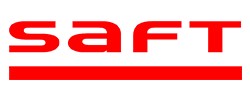Using IoT sensors in dangerous environments represents a real challenge for developers, as several operational and safety considerations come into play.
Many workplaces and activities are defined as explosive or potentially explosive atmospheres. There are those that seem obvious, including petrol stations and chemical processing plants, but also others that are considered high risk such as surface coating industries, wood/grain storages, sugar refineries and sewage treatment plants. Or, more commonly, gas meters, wherever they may be.
The development of an ATEX product takes several factors into account, and the choice of battery is not insignificant. At Adeunis, we have chosen to place our trust in SAFT, our long-standing partner for this product.


Adapting PULSE for new environments
An ATEX Zone is defined as one that has a greater risk of explosion due to a combination of dangerous substances with air in the form of gases, vapors, mist or dust.
Several years ago, Adeunis decided to launch its first ATEX sensor. To do so, we built on our existing PULSE sensor.
PULSE sensors already gave customers insight into their water and electricity meters, but Adeunis quickly realized that their customers – the building managers, owners, facility managers and energy managers – also needed to monitor the consumption of their gas meters.
As gas is flammable, they could not simply connect the PULSE sensor to the meter, they needed an ATEX sensor. After about 18 months of development the PULSE ATEX, adapted to meet the relevant ATEX standards, was launched.
As gas is flammable, they could not simply connect the PULSE sensor to the meter, they needed an ATEX sensor. After about 18 months of development the PULSE ATEX, adapted to meet the relevant ATEX standards, was launched.
During the design process, a number of requirements must be taken into account to limit any risk of exposure, which would be extremely dangerous in an explosive atmosphere.

The PULSE ATEX not only records actual gas consumption data, it also detects any potential overconsumption of energy or gas leaks, enabling users to take swift action if a threshold is exceeded.
Directive 2014/34/EU only applies within the EU, but there are similar requirements worldwide. At the center of these regulatory frameworks is the IEC and its IECEx certification system. IECEx provides a global framework for equipment, installations or personal skills in dangerous areas. It sets international standards and facilitates the operation of conformity assessment systems for manufacturers, regulators and equipment users, a prerequisite for ensuring safety.
Developing IoT ATEX sensors
When designing the PULSE ATEX, the main elements to be protected are energy storage and product inputs and outputs.
First, the need to mitigate risks meant reducing the energy storage to the minimum amount possible – while still being sufficient to operate the sensor.
The energy may come from various elements that needed shielding – from the stack, capacitors or inductances – as these elements can store energy in chemical form, in the form of voltage or in the form of current. They all, though, needed to be protected to meet the relevant safety standards.
The second factor – the product’s inputs and outputs – also required careful design. The PULSE ATEX sensor is directly linked to the meter itself, which also contains an energy source that needs protecting in dangerous environments.
Central to this all-round protection and safety is selecting the right battery for the product and its ATEX requirements.
The Adeunis team worked with Saft engineers and selected the LS 17500CNA battery for their product – and chose a soldered battery to ensure that it could not be replaced by a non-compliant battery. This chosen battery was then tested and validated, along with the entire sensor, by a certified laboratory to ensure compliance with the ATEX recommendations.
The PULSE ATEX is one of Adeunis’ best-selling products. Since its creation, more than 1,000 products have been installed and regularly read pulse data on various equipment in France and throughout Europe.
Which Saft cells are ATEX or IECEx compliant?
Choosing compliant batteries can be a real advantage for developers, as it reduces the time needed for certification and product launch.
Saft offers a number of solutions for explosive atmospheres, whether in the form of partially tested components or certified equipment. The long life of Saft batteries is also a key advantage in reducing the need for frequent replacement in remote or hard-to-reach locations.
15/06/2023
20 years
expertise to support you, from the diagnosis to the implementation of your solution


